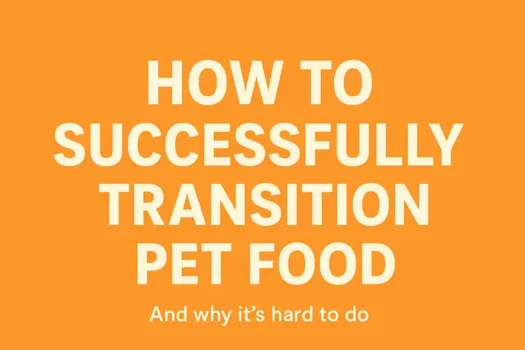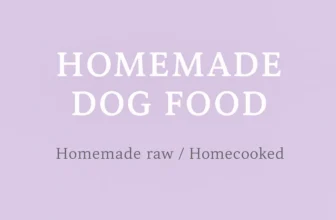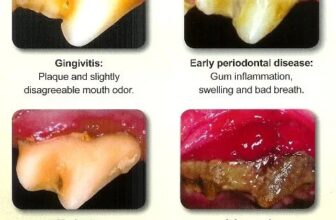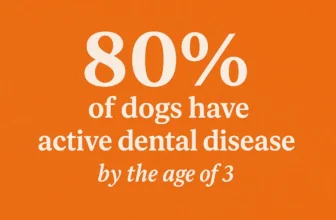How to transition to a new pet food (or type of pet food)

Lot’s of cats and dogs vomit or suffer the runs when transitioning to a brand of pet food, but you may be surprised to learn the reasons why – and they will also help you choose the right path forward for your pet’s health (trust me!)
I realised early on in my pet food journey that most pet owners assume the new food is the problem, quickly switching back to the old food – even if they’ve learned it’s unhealthy – and never think of transitioning every again.
But why is this?
I’ll tell you exactly why, and I’ll tell you right now:
Why is it hard to transition a cat or dog to a new food?
If we transition our pet to a poor quality food they may throw up or have diarrhea, and it’s easy to understand why if it’s cheap or poor quality.
Sometimes the new food is a bad batch or has suffered from poor storage/heat conditions. Although these cases are rare, we should always consider the new food could be a bad choice.
But I don’t see this as the main reason dogs and cats suffer from a change in diet.
Most of the time I view the previous diet or pet food as the #1 problem, which is why transitioning to a different diet is worth persisting with.
However, if it proves hard to transition your own pet, then it’s important you understand all the key points I cover below.
Your pet’s previous diet as the #1 problem
Let the following sink in:
How you’ve fed your pet until now should be consider the problem, and the reason a transition to a new food will need to be done with care.
You may question this if your veterinarian recommended your previous pet food, even if it were expensive and believed to be high quality. Or your breeder for that matter (we tend to trust them as experts).
Very simple facts:
Cats are carnivore, and dogs have much more in common biologically to cats than they do to us. Science courtesy of the pet food industry suggests dogs are omnivore like us, but that’s clearly not the case.
Dogs have a short digestive tract, like cats, designed to consume prey, not carbohydrates. They have strong stomach acid, like cats. for the very same reason. Also like cats, and all other carnivores, they have the same carnivorous teeth.
We feed our cats processed biscuits of grain or other starch, and we do the same for our dogs.
You’ll note this isn’t optimal, and this is just the start.
Also, thanks to pet food industry science, we’re of the believe we must only feed these processed pellets, for every meal, and for the sake of our pet’s health we should never feed anything else.
Sound familiar?
Even veterinarians promote this style of feeding, but they’re often taught be the pet food industry via University material and coursework, and rarely question it.
I can prove this is wrong, and I urge you to let this sink in as well (as it will show you how beneficial a transition to a better diet will be for the health of your pet):
- A pet fed only dry food (especially the case for cats) will very likely lead to renal disease.
- A pet fed only wet food (dogs or cats) will very likely suffer active dental disease from a young age.
Neither of the above are good news, yet these are the two most common recommendations from veterinarians on how you feed your pet.
To elaborate a little further, the reason “dry only” is bad is simply because carnivores are biologically designed to consume moisture in prey (around 70%) whereas kibble has little moisture (around 10%). Dogs tend to drink water, but cats aren’t proactive drinkers as they’re desert animals and it’s not in their nature.
“Wet only” provides nothing in the way of mechanical cleaning, which is how your dog and cat would naturally scrape off plaque and tartar from gnawing and chewing. Plaque and tartar causes dental disease, periodontal disease, and later organ disease.
You may be wondering where I’m going with all this?
So far we’ve covered how we feed our cats and dogs inappropriate pet foods for every single meal, and we’re told to do this for the sake of their health by veterinarians.
Now let’s consider the final piece of the puzzle.
It’s very well known in human nutrition how bad a limited diet is.
It often leads to health conditions if we miss vital nutrients over a long period of time, which is the reason pet foods are often formulated to contain all the nutrition your pet needs in every single nugget – you may have heard of AAFCO nutrient requirements, or the term “complete and balanced” which isn’t always something to be relied on.
The “complete and balanced” term, which suggests complete reliance on one brand of pet food to be everything your pet needs to survive, is a reason why veterinarians tend to believe the right way to feed your pet is with one of their high-quality processed pet foods made mostly of grains and dusted with vitamins to check that “complete and balanced” box.
However, in human nutrition, even a limited diet we believe is healthy can lead to a common problem – intolerance.
Cut out dairy for a year, and what do you think will happen if you have a glass of milk?
Eggs are healthy, yet cutting out eggs for a long time can cause issues if over that time you’ve relied on carbonara microwave meals for your nutritional needs.
It’s not just intolerance either, but a poor diet (such as processed pet food pellets) can weaken gut health, and once the gut microbiome is thrown out of whack it gets very hard to introduce new foods or types of foods.
You’ll note, that’s not a good position for you – or your dog or cat – to be in.
It’s also a very good reason to start transitioning your dog to a better and healthier diet.
How to easily transition to a new pet food
If your dog is healthy, and especially if they’ve had a varied diet previously, then transitioning to a new pet food can be seamless.
This is the case for both my dog and cat, who’ve always had a great deal of variety in their diet – note, by this I mean appropriate variety, with a balance of nutrients mostly from animal sources.
If your dog or cat has until this point had a limited diet, or your kitten or puppy has been weened by the breeder on one brand of pet food which has been fed until this point, then a gradual transition over a few weeks is recommended.
By gradual transition, I mean today mix 10% of the new food with 90% of the old food, and gradually increase this ratio until you’re feeding 100% new food.
What to watch out for:
Keeping in mind the possible issues we covered above from limited diets, inappropriate ingredients, and intolerance build-up, your pet may suffer some diarrhea, unrest, or in some cases vomiting.
Some pets (especially cats) will simply ignore a new food, which can either be confusion (because they’re so used to the old food), or because the new food doesn’t seem as appealing as you may have hoped (tips on this shortly).
Usually ill effects like sickness or diarrhea are temporary – a few days of runny poos, or an initial bout of spewing – but this should always be temporary.
If these issues persist, the transition in diet may suggest an underlying condition like pancreatitis or IBD (and other gut-related conditions). I’ll cover these below, but if your pet shows ongoing symptoms I encourage you to speak with your veterinarian.
Transitioning a puppy to an adult food
The most common transition from puppy phase to adult phase is to switch whatever puppy formula you’re feeding to the Adult formula of the same brand.
Usually this transition is easy, for the simple reason the Adult formula simply contains less good stuff – animal proteins & fats – and a little more redundant grain or vegetables than the puppy formula. Puppy foods have to comply to stricter standards, whereas Adult “maintenance” formulas can be made more cheaply.
Transitioning from one brand of puppy food to a different brand, or different type of food, can be more problematic. This is limited diet syndrome, and the affect is often smelly farts, runny poo, erratic behaviour, grass-chewing, and spewing. All because your pup has never had the chance to get used to new, interesting, or even healthier foods.
If this is the case, persist!
Transitioning a from a dry food to raw food
Many dogs fed commercial pet foods have issues going cold turkey and switching to raw food.
The reason – Most often weak gut and intolerance from the old diet.
A secondary reason – Make sure the raw food you’re switching to is of good quality, as some raw foods or BARF patties aren’t as good quality as you may assume.
Great tip: Slow-cooked dog foods can offer you a fantastic and much simpler transition from processed pet foods to a better diet, and should make a transition to raw much easier in the future.
Why won’t your pet eat a new food?
Cheap pet foods can be addictive, or use “palatants” to entice your pet to eat a product they wouldn’t naturally eat. Sometimes these additives aren’t healthy, but as they encourage your pet to “lap up” a food it convinces you it must be good.
Often switching to a healthier pet food is similar from giving your sugar-addicted kid an apple. You know the apple is much healthier, and you’ll also note kids who have little sugar in their diet will more readily eat fruit and enjoy it.
Kibble and wet pet foods suffer this same issue, so if your cat or dog is hooked on the previous food then it’s hard to transition them to a healthier diet, but not impossible – just persist.
Cats are believed to be slightly autistic, and habitual, which makes it harder to transition a cat to a new food they simply don’t recognise initially as food.
Illnesses which may display symptoms during a change in diet
If symptoms such as sickness or diarrhea persist when changing to a new pet food or type of diet, they could be a sign of (1) an unhealthy or weakened gut, or (2) an underlying illness which has remained hidden until this point.
I’ll cover potential underlying illnesses, along with a brief summary of why they may occur during a transition in diet.
In many cases these illnesses can be reversed by a change to a better diet, so I urge you not to switch back to the previous diet in the hope they’ll go away.
Pancreatitis
Inflammatory Bowel Disease (IBD) & chronic gut inflammation
Food allergies (dietary sensitivities) or intolerances
Compromised gut microbiome (weak gut) – often from long-term kibble feeding
Diabetes
Exocrine Pancreatitis Insufficiency (EPI)
Liver disease
Kidney disease

Join the Reddit community r/HealthyAussiePets







I read your articles and am so grateful and impressed with what are able to inform me on the results on my cats eating commercial cat foods. It is truly a nightmare!
Not to mention the cost. Most of the contents of these brands being thrown out as inedible rubbish.
The animals are much smarter than us!!
Thank you for your wonderful and informative articles. Don’t stop you are a star.
Thank you so much for the feedback Robbie – very much appreciated!
Yes, the instinct of our cats and dogs really contradicts pet food “science” designed to sell us grains for carnivores to make billions of bucks!
Love your articles. Thanks David.
Thank you Judith! Appreciated!
After all these years of blogging and writing, I continue to feel my articles are full of waffle. So it’s great to receive feedback such as this 🙂